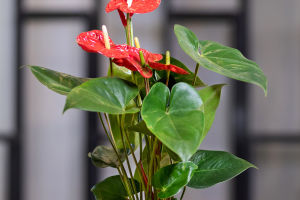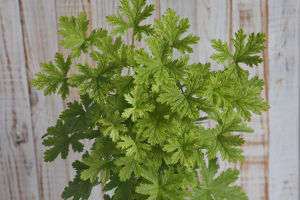Dracaena trifasciata, commonly known as the snake plant or mother-in-law's tongue, is a beloved houseplant celebrated for its beauty, low maintenance, and air-purifying qualities.
In this article, we will delve into the fascinating world of dracaena trifasciata, learning about its origins, care requirements, and the myriad benefits it brings to indoor spaces.
1. Aesthetic Appeal
Dracaena trifasciata is admired for its elegant and striking appearance.
It features long, upright, sword-shaped leaves that are usually green with variegated patterns of dark green or yellow, adding a touch of sophistication to any room.
2. Origin and Distribution
Native Habitat: This plant originates from West Africa, particularly regions of Nigeria and the Congo.
Global Presence: It has found its way into homes and gardens around the world, thanks to its adaptability to various climates and conditions.
3. Resilience and Low Maintenance
Hardiness: Dracaena trifasciata is a resilient plant that can withstand neglect and adverse conditions, making it an excellent choice for novice gardeners.
Low Water Needs: It thrives on minimal watering and can tolerate drought. Overwatering is one of the most common mistakes made with this plant.
4. Air-Purifying Abilities
Natural Air Cleaner: This houseplant is known for its air-purifying qualities.
It can remove toxins such as formaldehyde, benzene, and xylene from the air, improving indoor air quality.
Oxygen Production: During the night, it continues to produce oxygen, making it a beneficial addition to bedrooms.
5. Varied Cultivars
Dracaena trifasciata has numerous cultivars, each with unique leaf patterns and sizes.
Some popular cultivars include the dracaena trifasciata 'Laurentii' with distinctive yellow margins and the dracaena trifasciata 'Hahnii' with compact, bird's nest-like growth.
6. Versatile Placement
This plant can thrive in a variety of indoor settings, from well-lit spots to lower light conditions.
Its adaptability allows it to be placed on office desks, living room corners, or even as a stylish bathroom addition.
7. Propagation
Leaf Cuttings: Dracaena trifasciata can be propagated from leaf cuttings.
A single leaf can produce new shoots when planted in suitable soil.
Dividing Clumps: Mature plants can be divided into smaller clusters, making it an excellent choice for sharing with friends or expanding your plant collection.
8. Cultural Significance
Feng Shui: In Feng Shui practices, the snake plant is believed to bring luck, good fortune, and protective energy when placed in specific spaces in a house.
Symbol of Resilience: In some cultures, the snake plant symbolizes resilience and endurance, making it a thoughtful gift for various occasions.
9. Common Issues
Overwatering: Root rot can occur if the plant is consistently overwatered.
Pests: While pest-resistant, it can sometimes be affected by mealybugs or spider mites, so regular inspection is advisable.
10. Aesthetic and Health Benefits
Dracaena trifasciata brings aesthetic appeal and health benefits to any indoor environment.
It not only enhances the visual appeal of your space but also contributes to cleaner, fresher air, promoting well-being.
In conclusion, dracaena trifasciata, the snake plant, stands out as a versatile and low-maintenance houseplant that offers aesthetic and health benefits.
Its striking appearance, resilience, and air-purifying properties make it a popular choice for both novice and experienced plant enthusiasts.
Whether you're looking to enhance the beauty of your home or breathe cleaner air, the snake plant is a reliable and stylish addition to your indoor space.


